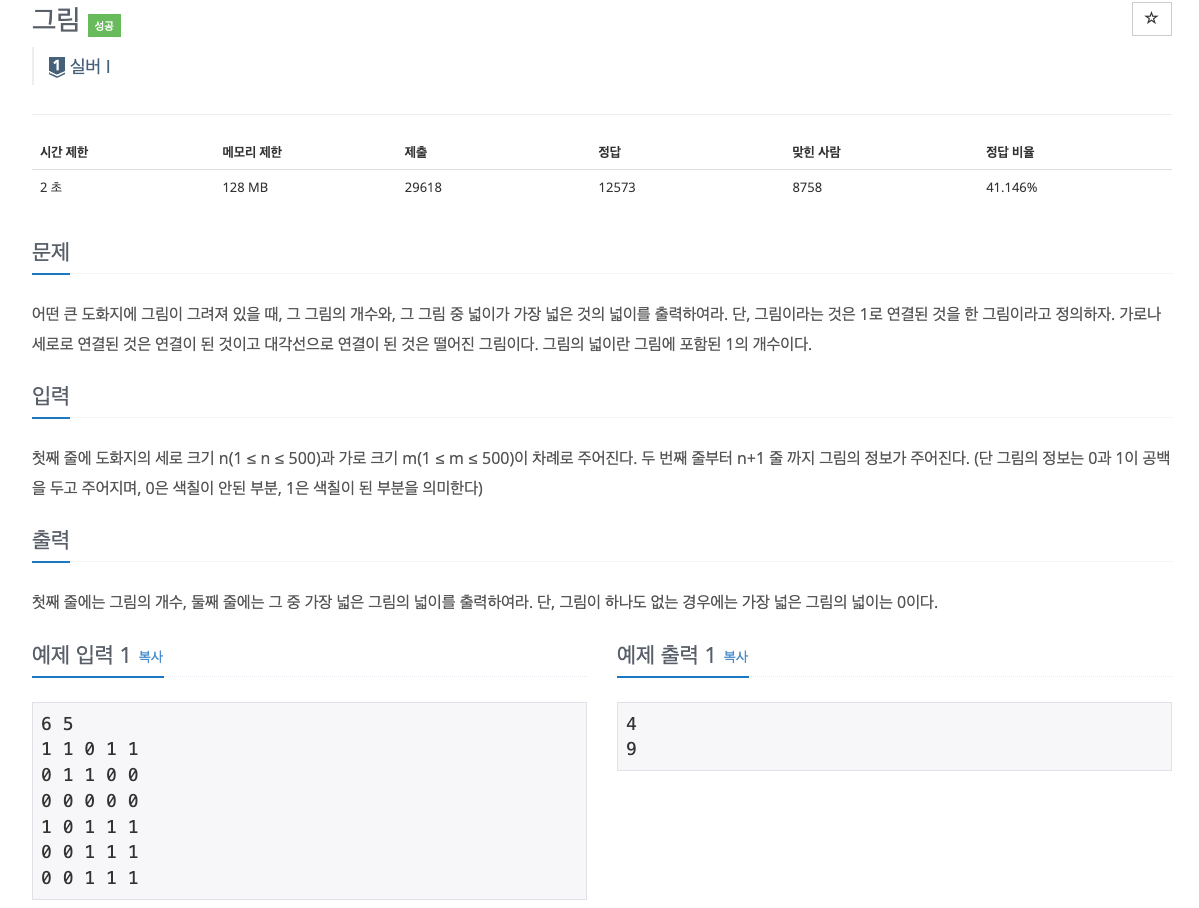BackJoon Algorithm - Java

문제

풀이
import java.io.BufferedReader;
import java.io.IOException;
import java.io.InputStreamReader;
import java.util.LinkedList;
import java.util.Queue;
import java.util.StringTokenizer;
public class Back_1926 {
public static class Pair {
int x;
int y;
public Pair(int x, int y) {
this.x = x;
this.y = y;
}
public int getX() {
return x;
}
public int getY() {
return y;
}
public void setX(int x) {
this.x = x;
}
public void setY(int y) {
this.y = y;
}
}
static int n;
static int m;
static int arr[][];
static boolean[][] visited;
static int[] dx;
static int[] dy;
static Queue<Pair> qu;
public static void main(String[] args) throws IOException {
BufferedReader br = new BufferedReader(new InputStreamReader(System.in));
StringTokenizer st = new StringTokenizer(br.readLine());
n = Integer.parseInt(st.nextToken());
m = Integer.parseInt(st.nextToken());
arr = new int[n][m];
visited = new boolean[n][m];
qu = new LinkedList<>();
dx = new int[]{1, 0, -1, 0};
dy = new int[]{0, 1, 0, -1};
for (int i = 0; i < n; i++) {
st = new StringTokenizer(br.readLine());
for (int j = 0; j < m; j++) {
arr[i][j] = Integer.parseInt(st.nextToken());
}
}
int count = 0;
int area = 0;
int max = 0;
for (int i = 0; i < n; i++) {
for (int j = 0; j < m; j++) {
// 0 이거나 방문한적이 있으면 continue
if (arr[i][j] == 0 || visited[i][j]) {
continue;
}
count++; // 1이고, 방문하지 않았으므로 시작점
qu.offer(new Pair(i, j));
visited[i][j] = true;
area = 0;
while (!qu.isEmpty()) {
Pair p = qu.poll();
area++;
for (int k = 0; k < 4; k++) {
int nX = p.x + dx[k];
int nY = p.y + dy[k];
if (nX < 0 || nX >= n || nY < 0 || nY >= m) {
continue;
}
if(arr[nX][nY] == 1 && !visited[nX][nY]){
qu.offer(new Pair(nX,nY));
visited[nX][nY] = true;
}
}
}
if(area > max){
max = area;
}
}
}
System.out.println(count);
System.out.println(max);
}
}



댓글남기기